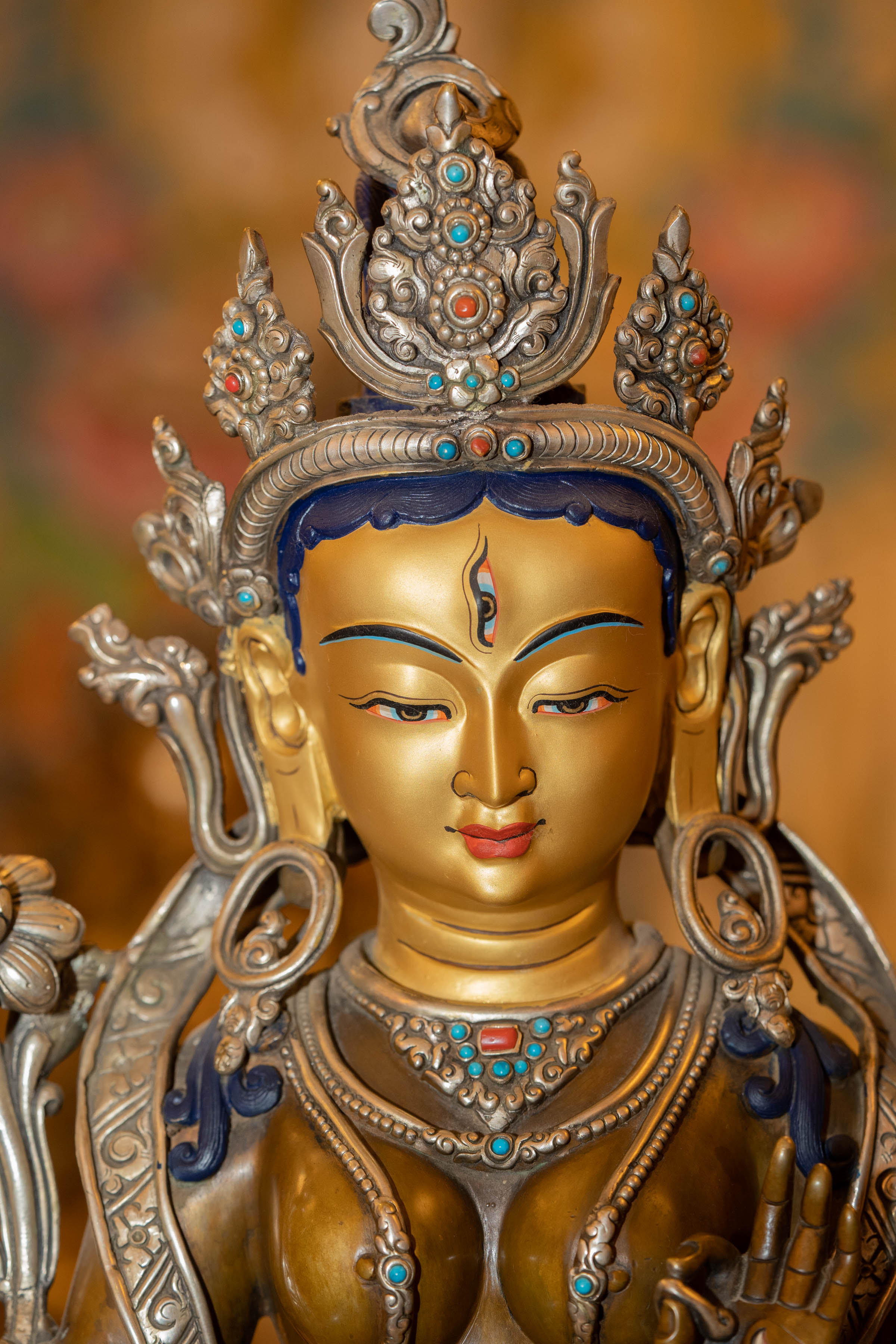Bodhi seeds, with their enigmatic aura and deep-rooted symbolism, hold a special place in various spiritual traditions. Derived from the revered Bodhi tree, these seeds have captured the imagination of seekers and practitioners for centuries. In this article, we will delve into the profound meaning and symbolism of Bodhi seeds, shedding light on their spiritual significance.
The Origin of Bodhi Seeds
The term "Bodhi" finds its roots in Sanskrit, a language revered for its profound spiritual connotations. It carries a weight of meaning that extends beyond mere linguistic interpretation. In its essence, it encapsulates the very essence of awakening and enlightenment, signifying a transcendental shift in consciousness. This term, pulsating with spiritual significance, is intrinsically entwined with the transformative moment of Siddhartha Gautama's enlightenment beneath the majestic canopy of the Bodhi tree, ultimately metamorphosing into the revered figure of the Buddha.
This event, steeped in the annals of spiritual history, marks a pivotal turning point for humanity, offering a beacon of light for seekers across epochs. It's within this sacred context that the seeds produced by the Bodhi tree, scientifically classified as Ficus Religiosa, take on an aura of sanctity and reverence. They serve as living witnesses to that momentous awakening, carrying forth the energy and essence of that transcendental experience through the ages, rendering them as not mere seeds, but as custodians of an indelible spiritual legacy. Each Bodhi seed, through its very existence, stands as a testament to the enduring power of enlightenment, an unbroken lineage that links the contemporary seeker to the ancient roots of spiritual illumination.
Physical Characteristics of Bodhi Seeds

Bodhi seeds are small, dark-brown seeds with a smooth, almost pebbled texture, a testament to the unique nature of these sacred seeds. Encased within small fruits that bear a striking resemblance to figs, they are concealed, waiting to be discovered by those who recognize their significance. These seeds, though unassuming in appearance, carry a weight of spiritual energy that transcends their physical form. They are hard, compact, and possess a natural sheen, as if polished by the hands of time itself.
This inherent luster adds an extra dimension to their allure, making them not just seeds, but vessels of potential and promise. It is this distinctive combination of attributes that renders them ideal for crafting into prayer beads and meditation tools, allowing practitioners to forge a tangible connection with the essence of enlightenment. When held in the palm, these seeds exude a reassuring weight, grounding the practitioner in the present moment and serving as a conduit for the flow of focused intention during meditation and prayer.
Bodhi Seeds in Buddhist Practice
Meditation Aids
Bodhi seeds have been used for centuries as prayer beads, known as mala beads in Buddhist traditions. The smooth surface and comfortable weight of the seeds make them excellent tools for counting mantras during meditation. This tactile connection helps practitioners maintain focus and rhythm, enhancing their meditation experience. The gentle touch of the seeds against the skin serves as a grounding force, allowing the practitioner to anchor their awareness in the present moment. Each seed carries a subtle energy, almost like a heartbeat, resonating with the seeker's own rhythm of breath and heartbeat.
This synergistic connection aligns the physical, mental, and spiritual aspects, creating a harmonious flow of energy during meditation. As the practitioner moves from one seed to the next, there is a sense of continuity and progression, mirroring the journey towards enlightenment itself. This sacred cycle of touch and recitation becomes a meditative dance, a profound union of the individual with the universal.
Symbol of Enlightenment

The Bodhi tree, under which the Buddha attained enlightenment, is the very essence of awakening in Buddhism. Its sprawling branches and deep roots evoke a sense of ancient wisdom, a living testament to the transformative power of spiritual insight. Bodhi seeds, being direct descendants of this sacred tree, symbolize the potential for enlightenment within all beings. They carry within them the echo of that moment when Siddhartha Gautama transcended the confines of human existence to touch the realms of ultimate truth.
Wearing or using Bodhi seeds serves as a constant reminder of the ultimate goal of spiritual practice - the attainment of enlightenment. It is akin to carrying a piece of that sacred Bodhi tree with you, a portable beacon of illumination in the journey towards self-realization. Each seed, with its unique texture and pattern, carries the imprint of the wisdom of the ages, a silent testament to the boundless potential that lies dormant within every seeker.
Protection and Healing
Bodhi seeds are revered for their dual role as protectors and healers. They're believed to shield against negative energies, providing a profound sense of calm. Additionally, these seeds are cherished for their potential to support physical rejuvenation and spiritual balance.
In various cultures, Bodhi seeds are seen as more than accessories; they are spiritual guardians. They deflect negativity, creating a sanctuary for the wearer. These seeds also act as catalysts for inner balance and enduring well-being, making them valued companions on the spiritual journey.
Bodhi Seeds in Hinduism
In Hinduism, the Bodhi tree holds profound symbolism as a representation of wisdom and eternal life. Within this context, Bodhi seeds, also known as "Rudraksha," emerge as sacred beads of immense spiritual significance. These seeds find their purpose in the crafting of prayer malas, embodying a connection with the divine. Specifically associated with Lord Shiva, they are believed to carry the very energy of this deity, acting as conduits for invoking his blessings. Additionally, the faithful wear Rudraksha beads as protective amulets, believing in their ability to ward off negative influences and bestow a sense of spiritual shield.
Tibetan Buddhism and Bodhi Seeds

Within the realm of Tibetan Buddhism, Bodhi seeds assume a position of particular prominence. These seeds are frequently employed in the creation of malas, serving as instrumental tools for meditation and prayer. They are held in high regard for their auspicious nature, their presence believed to enhance the potency of mantras and prayers. As integral components of Tibetan spiritual practice, Bodhi seeds are seen as conduits for channeling divine energies, ultimately aiding practitioners on their path towards spiritual enlightenment.
Incorporating Bodhi Seeds into Your Spiritual Practice
1. Choosing Your Bodhi Seed Mala
When selecting a Bodhi seed mala, consider factors such as size, shape, and texture. It's important that the mala feels comfortable in your hand and has a texture that resonates with you. Additionally, inspect the seeds for any irregularities, as smooth, evenly-sized seeds are preferred for an optimal meditation experience.
2. Caring for Your Bodhi Seed Mala
To ensure the longevity of your Bodhi seed mala, it's advisable to treat it with care. Avoid exposing it to extreme temperatures or direct sunlight, as this may cause the seeds to deteriorate. Regularly cleanse your mala through gentle wiping and store it in a cool, dry place when not in use.
Conclusion
Bodhi seeds hold a profound and enduring symbolism across diverse spiritual traditions. Their significance transcends their physical form, resonating as potent symbols of enlightenment and awakening. When woven into the fabric of our spiritual endeavors, these seeds unfold a narrative rich with layers of meaning and deep spiritual significance. Whether held close in meditation, worn reverently as protective talismans, or integrated into the sacred choreography of prayer rituals, Bodhi seeds become conduits of ancient wisdom and potent reminders of our own potential for inner transformation.
In the quiet interplay between hand and seed, there is a subtle yet palpable exchange of energies. These seeds, borne from the very tree that witnessed the Buddha's awakening, carry within them the essence of that transformative moment. As we engage with them, we align ourselves with a lineage of seekers, ancient and contemporary, who have embarked on the path towards illumination. The Bodhi seeds, through their unassuming presence, become bridges to a higher understanding, inviting us to explore the depths of our own spiritual practice. By recognizing the profound symbolism encapsulated within these tiny seeds, we embark on a journey of profound self-discovery and spiritual awakening, forging a connection that reverberates through the tapestry of our entire being.



